Naming the Mohahve River
from; Narrative of J. C. FREMONT, Bt. Cap. Topi. Engineers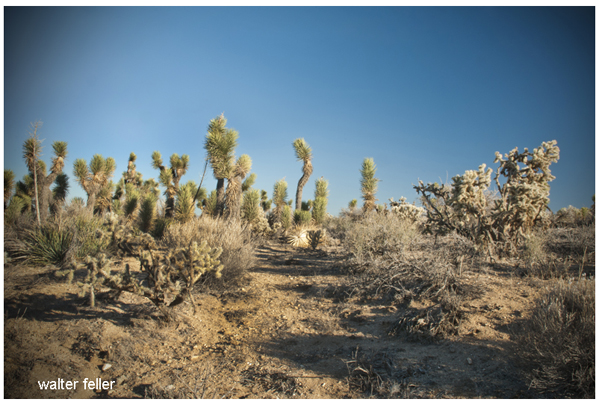
Our road the next day was still in an easterly direction along the ridge, over very bad traveling ground, broken and confounded with crippled trees and shrubs; and, after a difficult march of eighteen miles, a general shout announced that we had struck the great object of our search—the Spanish Trail —which here was running directly north. The road itself, and its course, were equally happy discoveries to us. Since the middle of December we had continually been forced south by mountains and by deserts, and now would have to make six degrees of northing, to regain the latitude on which we wished to cross the Rocky mountains. The course of the road, therefore, was what we wanted ; and, once more, we felt like going homewards. A road to travel on, and the right course to go, were joyful consolations to us ; and our animals enjoyed the beaten track like ourselves. Relieved from the rocks and brush, our wild mules started off at a rapid rate, and in fifteen miles we reached a considerable river, timbered with cottonwood and willow, where we found a bottom of tolerable grass. As the animals had suffered a great deal in the last few days, I remained here all next day, to allow them the necessary repose ; and it was now necessary, at every favorable place, to make a little halt. Between us and the Colorado river We were aware that the country was extremely poor in grass, and scarce for water, there being rudiny jornadas, (days' journey,) or long stretches of forty to sixty miles, without water, where the road was marked by bones of animals.
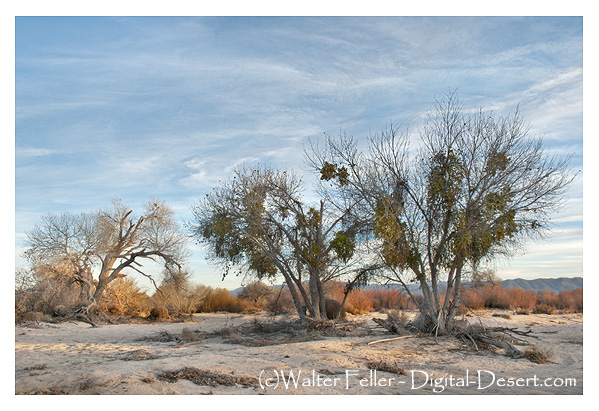
Although in California we had met with people who had passed over this trail, we had been able to obtain no correct information about it; and the greater part of what we had heard was found to be only a tissue of falsehoods. The rivers that we found on it were never mentioned, and others, particularly described in name and locality, were subsequently seen in another part of the country. It was described as a tolerably good sandy road, with so little rock as scarcely to require the animals to be shod ; and we found it the roughest and rockiest road we had ever seen in the country, and which nearly destroyed our band of fine mules and horses. Many animals are destroyed on it every year by a disease called the foot-evil ; and a traveler should never venture on it without having his animals well shod, and also carrying extra shoes. Latitude 34° 34' 11" ; and longitude 117° 13' 00"".
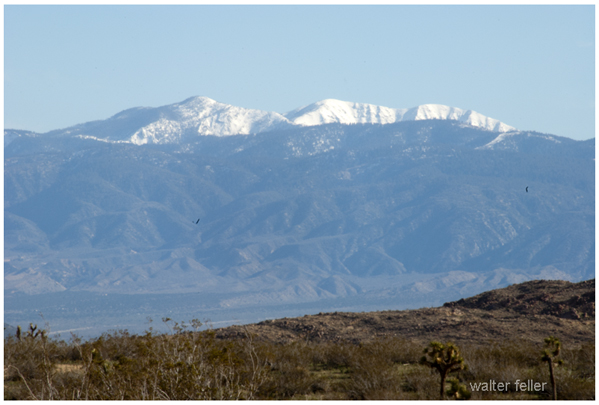
The morning of the 22d was clear and bright, and a snowy peak to the southward shone out high and sharply defined. As has been usual since we crossed the mountains and descended into the hot plains, we had a gale of wind. We traveled down the right bank of the stream, over sands which are somewhat loose, and have no verdure, but are occupied by various shrubs. A clear bold stream, 60 feet wide, and several feet deep, had a strange appearance, running between perfectly naked banks of sand. The eye, however, is somewhat relieved by willows, and the beautiful green of the sweet cottonwoods with which it is well wooded. As we followed along its coui'se, the river, instead of growing constantly larger, gradually dwindled away, as it was absorbed by the sand. We were now careful to take the old camping-places of the annual Santa Fe caravans, which, luckily for us, had not yet made their yearly passage. A drove of several thousand horses and mules would entirely have swept away the scanty grass at the watering places, and we should have been obliged to leave the road to obtain subsistence for our animals. After riding 20 miles in a northeasterly direction, we found an old encampment, where we halted. By observation, the elevation of this encampment is 2,250 feet.
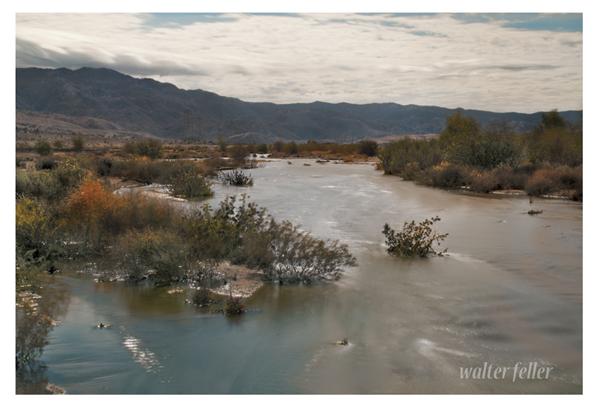
23d.—The trail followed still along the river, which, in the course of the morning, entirely disappeared. We continued along the dry bed, in which, after an interval of about 16 miles, the water reappeared in some low places, well timbered with Cottonwood and willow, where was another of the customary camping-grounds. Here a party of six Indians came into camp, poor and hungry, and quite in keeping with the character of the country. Their arms were bows of unusual length, and each had a large gourd, strengthened with meshes of cord, in which he carried water. They proved to be the Mohahve Indians mentioned by our recent guide ; and from one of them, who spoke Spanish fluently, I obtained some interesting information, which I would be glad to introduce here. An account of the people inhabiting this region would undoubtedly possess interest for the civilized world. Our journey homewards was fruitful in incident ; and the country through which we traveled, although a desert, afforded much to excite the curiosity of the botanist ; but limited time, and the rapidly advancing season for active operations, oblige me to omit all extended descriptions, and hurry briefly to the conclusion of this report.
The Indian who spoke Spanish had been educated for a number of years at one of the Spanish missions, and, at the breaking up of those establishments, had returned to the mountains, where he had been found by a party of Mohahve (sometimes called Amuchaba) Indians, among whom he had ever since resided.
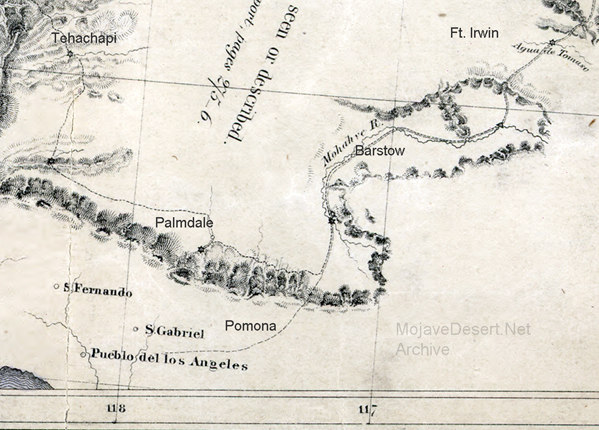
He spoke of the leader of the present party as " mi cano," (my master.) He said they lived upon a large river in the southeast, which the "soldiers called the Rio Colorado;" but that, formerly, a portion of them lived upon this river, and among the mountains which had bounded the river valley to the northward during the day, and that here along the river they had raised various kinds of melons. They sometimes came over to trade with the Indians of the Sierra, bringing with them blankets and goods manufactured by the Monquis and other Colorado Indians. They rarely carried home horses, on account of the difficulty of getting them across the desert, and of guarding them afterwards from the Pa-utah Indians, who inhabit the Sierra, at the head of the Rio Virgen, (river of the Virgin).
He informed us that, a short distance below, this river finally disappeared. The two different portions in which water is found had received from the priests two different names ; and subsequently I heard it called by the Spaniards the Rio de las Animas, but on the map we have called it the Mohahve river.
 Mesquite
Mesquite24th.—We continued down the stream (or rather its bed) for about eight miles, where there was water still in several holes, and encamped. The caravans sometimes continued below, to the end of the river, from which there is a very long Jornada of perhaps 60 miles, without water. Here a singular and new species of acacia, with spiral pods or seed-vessels, made its first appearance ; becoming henceforward, for a considerable distance, the characteristic tree. It was here comparatively large, being about 20 feet in height, with a full and spreading top, the lower branches declining towards the ground. It afterwards occurred of smaller size, frequently in groves, and is very fragrant. It has been called by Dr. Torrey, spirolohimn odoratum. The zygophyllaceous shrub had been constantly characteristic of the plains along the river; and here, among many new plants, a new and very remarkable species of eriogonum (eriogoniim inflatum, Tor. & Frem.) made its first appearance.
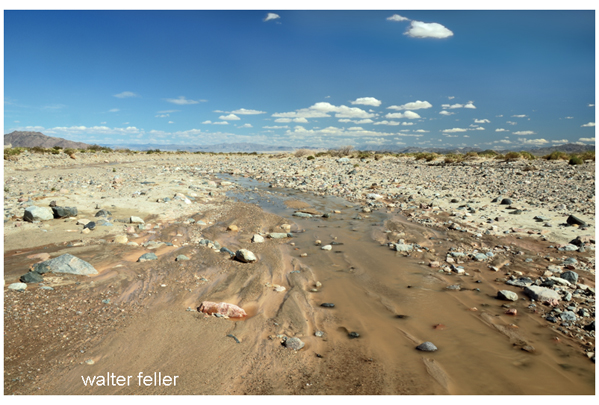
Our cattle had become so tired and poor by this fatiguing traveling, that three of them were killed here, and the meat dried. The Indians had now an occasion for a great feast, and were occupied the remainder of the day and all night in cooking and eating. There was no part of the animal for which they did not find some use, except the bones.
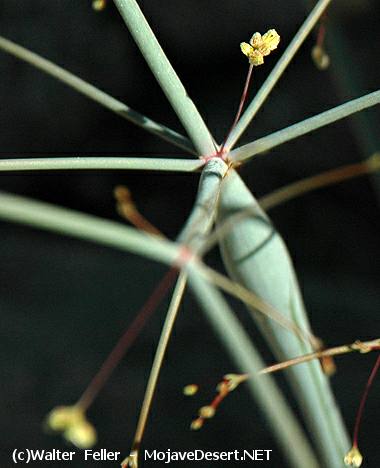
Desert trumpet (Eriogonum inflatum)
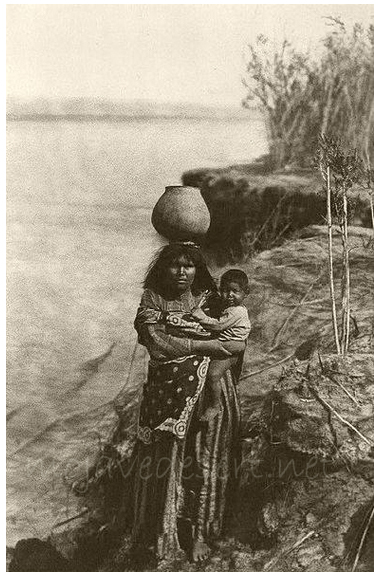
Mohave woman - Edward Curtis photo

John C. Fremont
